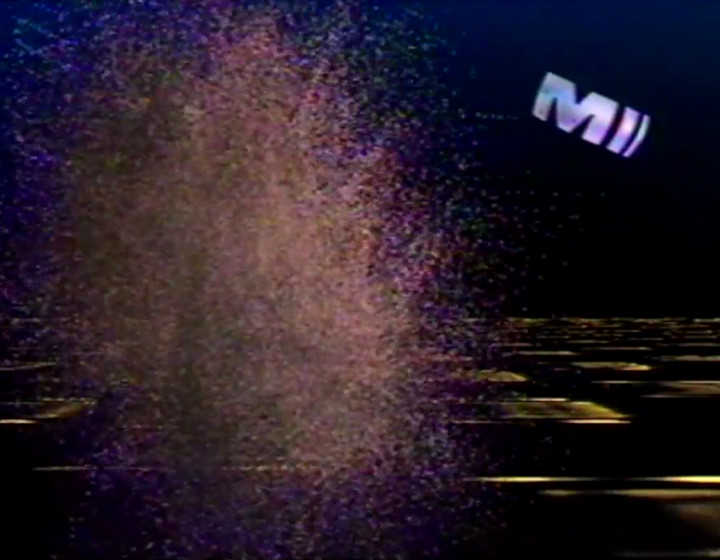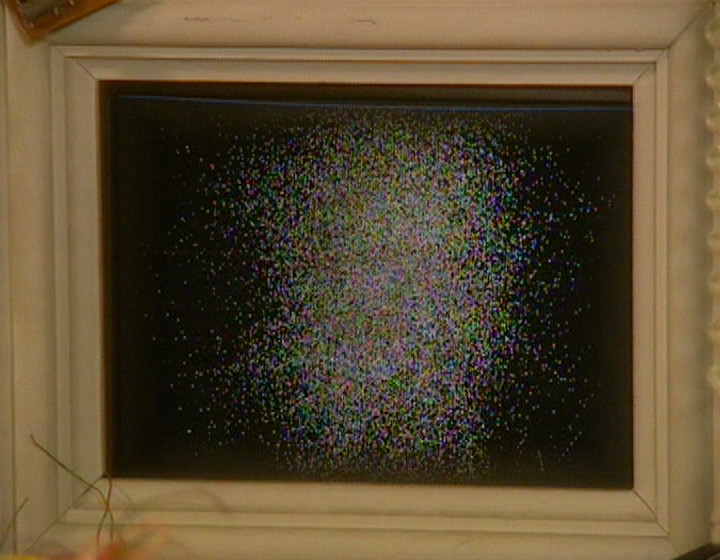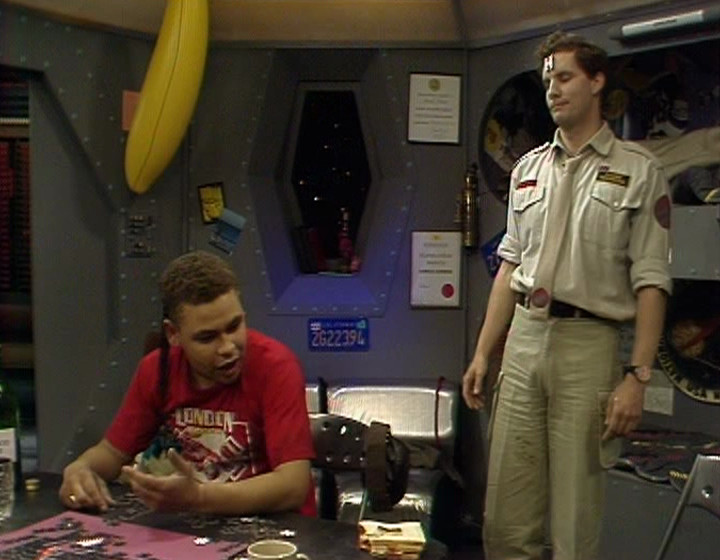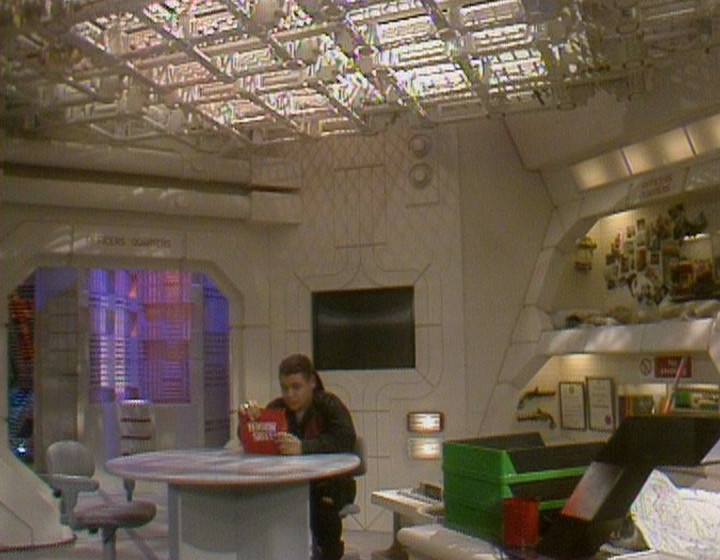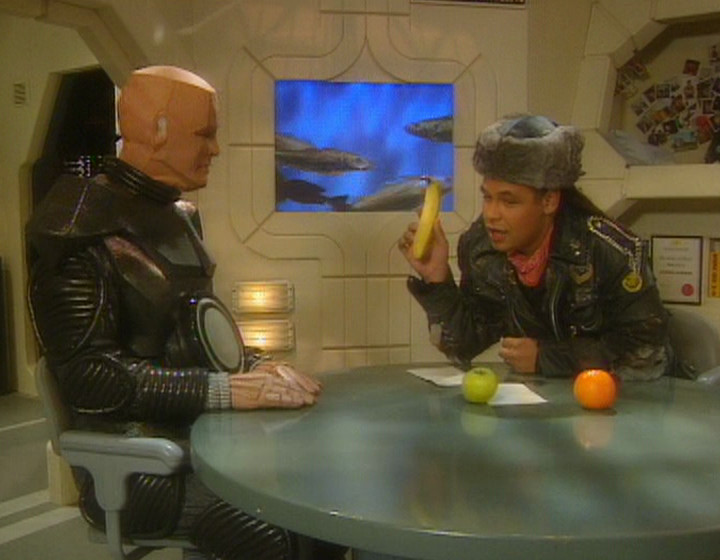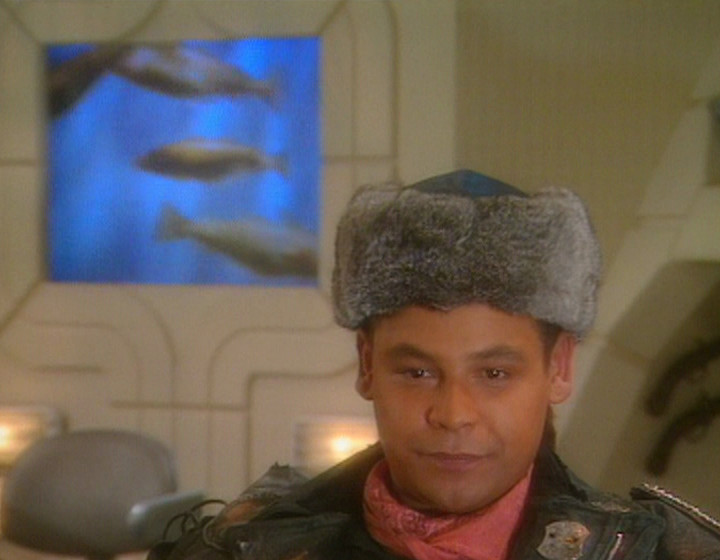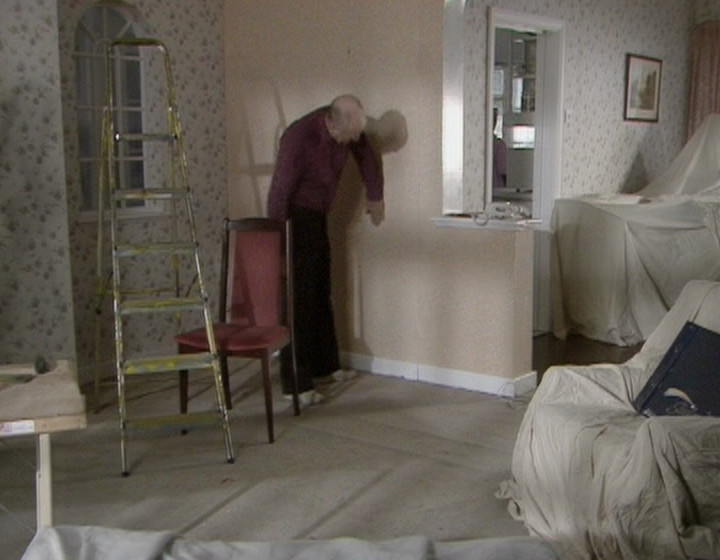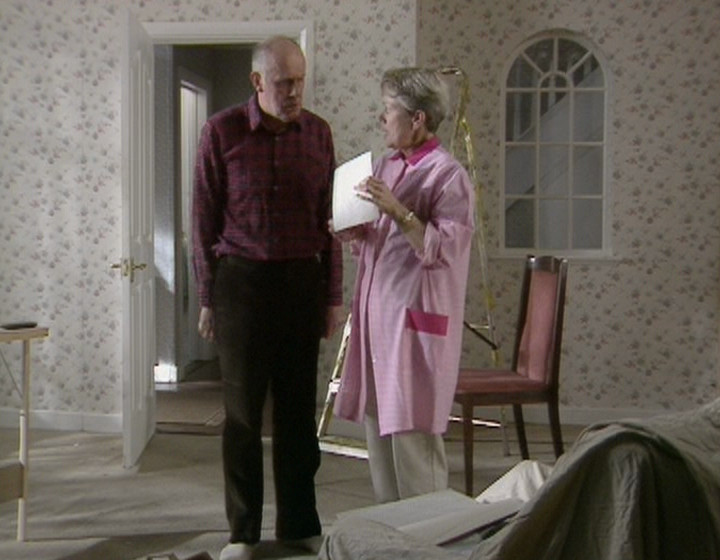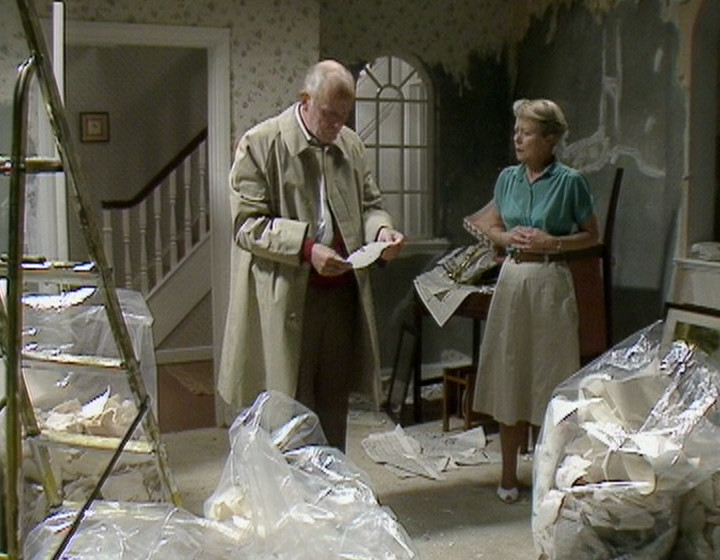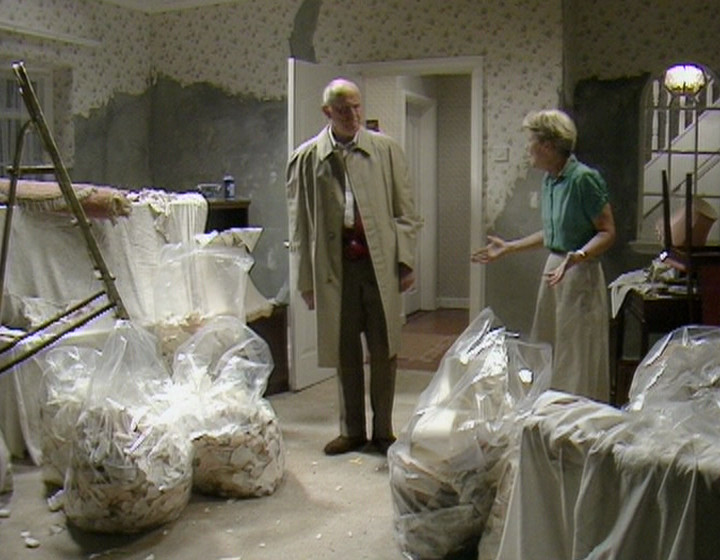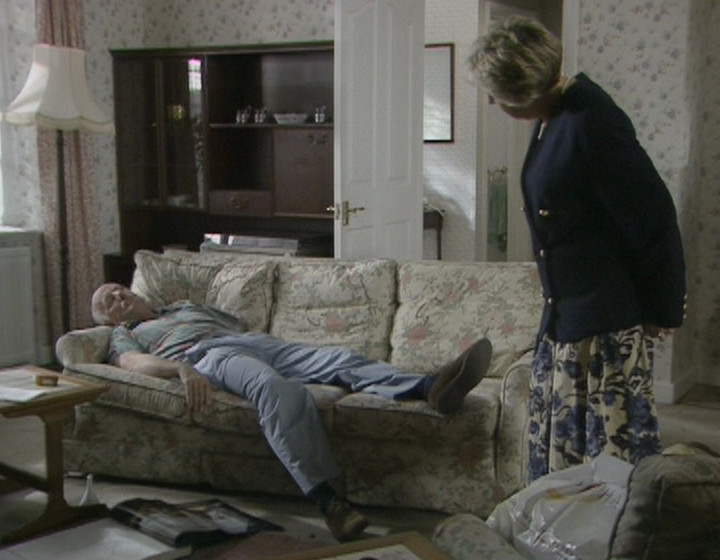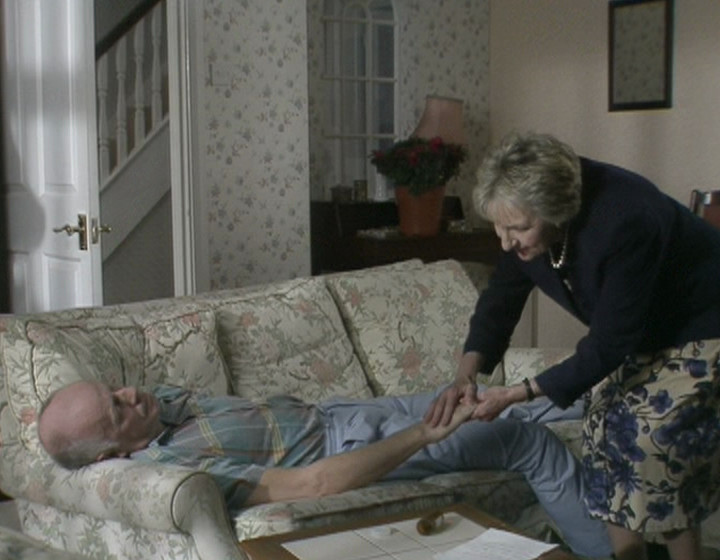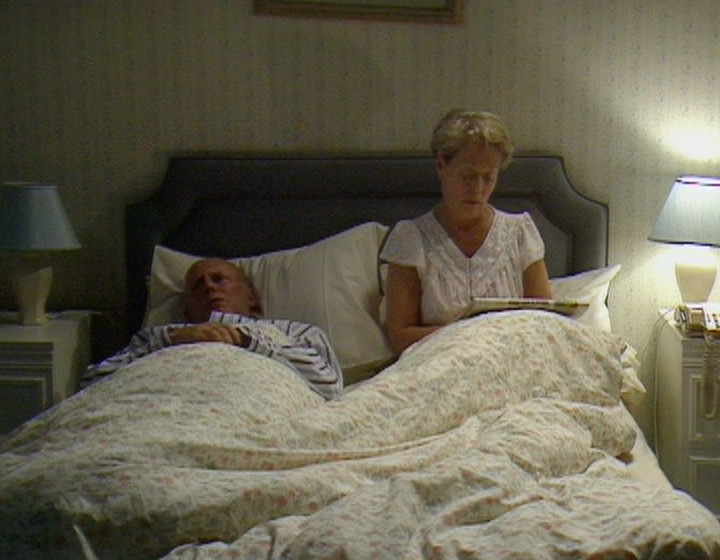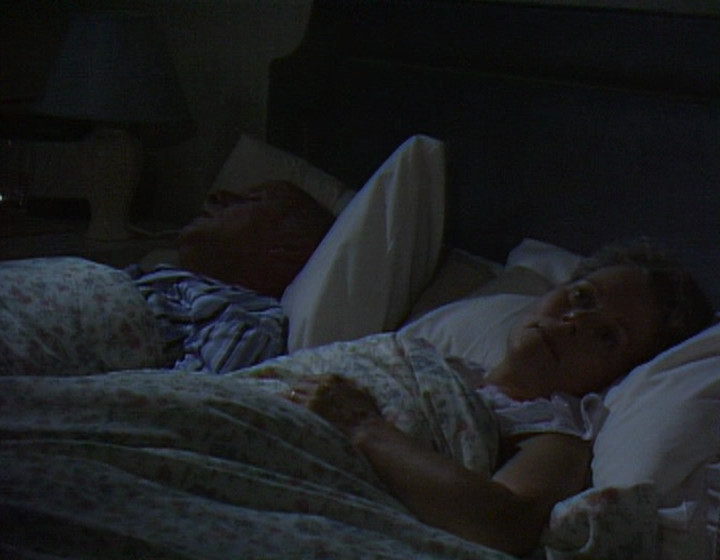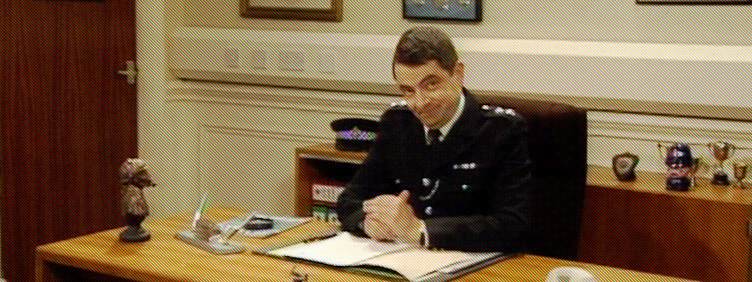Shooting in front of an audience poses all kinds of unique problems for a sitcom.
Take the One Foot in the Grave episode “We Have Put Her Living in the Tomb” (TX: 11/10/90). That’s the show which burns one tortoise to death, and buries another one alive. But what we’re more interested in today is… the Meldrews’ living room wallpaper.
Because here is the state of their living room at the beginning of the episode:
Here is the state of their living room when they return from picking up the tortoise:
And here is the state of their living room by the end of the episode:
The question: how do you record that middle scene with all the wallpaper ripped down in front of an audience, when you have other scenes to shoot on that set? Sure, there’s time during the recording session to redress the set a little. But there’s surely not time to pull off all that wallpaper, let alone put it all back on again.
The answer is: you don’t record the scene in front of that particular audience. But it’s how they don’t which is interesting.
Let’s look at the main studio recording dates for Series 2 of One Foot in the Grave, as detailed in the production paperwork:
| Episode |
RX |
TX |
In Luton Airport No-One
Can Hear You Scream |
4/8/90 |
4/10/90 |
We Have Put Her Living
in the Tomb |
8/9/90 |
11/10/90 |
| Dramatic Fever |
11/8/90 |
18/10/90 |
| Who Will Buy? |
18/8/90 |
25/10/90 |
| Love and Death |
25/8/90 |
8/11/90 |
| Timeless Time |
1/9/90 |
15/11/90 |
In general, the series was shot in the order it was transmitted in; the only difference is that the sixth episode recorded – yes, “We Have Put Her Living in the Tomb” itself – was moved up to the second broadcast.
The dates listed in the above table are for the main studio records, done in front of an audience at TV Centre. But these weren’t the only dates material for the series was recorded on. The most obvious example is the location film sequences, which were shot between the 1st – 20th July. But the paperwork also details some of the studio pre-records, done without the audience present. “Love and Death”, for instance, had an entire pre-record day on the the 24th, the day before the main studio recording.
So what about our scene with the wallpaper ripped down? The paperwork gives the following details:
Pre-recording 1.9.90 (Sc. 3) – H.105087/H.105373
Afternoon Pre-recording 8.9.90 – H.194931H/H.194141
Both edited onto H.192160 for insert into main studio.1
The second line is fairly standard; it tells us that there was at least one scene pre-recorded in the afternoon, before the main studio record of the episode. (Sadly, it doesn’t say which scene or scenes.) The third line tells us that all the pre-record material was edited onto one tape for playing in during the main audience record.
But the first line is the one which interests us. This tells us there was material shot on the 1st September; the week before the main record of “We Have Put Her Living in the Tomb”. And it indicates that it was Scene 3 which was pre-recorded. I don’t have access to a camera script of the episode, but the scene with the wallpaper ripped down is in fact the third scene in the transmitted programme.
And what else was recorded on the 1st September? A certain, famous episode called “Timeless Time” (TX: 15/11/90). An episode set entirely in Victor and Margaret’s bedroom.
All of a sudden, what the production was doing clicks into place. If you have to record a scene where the living room set looks entirely different, why not record it on a day where you’re not recording anything else in that set? Recording it in the same session as an episode set entirely in the Meldrew’s bedroom is perfect. And so production decisions taken in the last half of 1990 slide quietly, but satisfyingly, into place within my head.
A bit too satisfyingly, actually. Off for a lie down. Excuse me.
Read more about...
one foot in the grave

